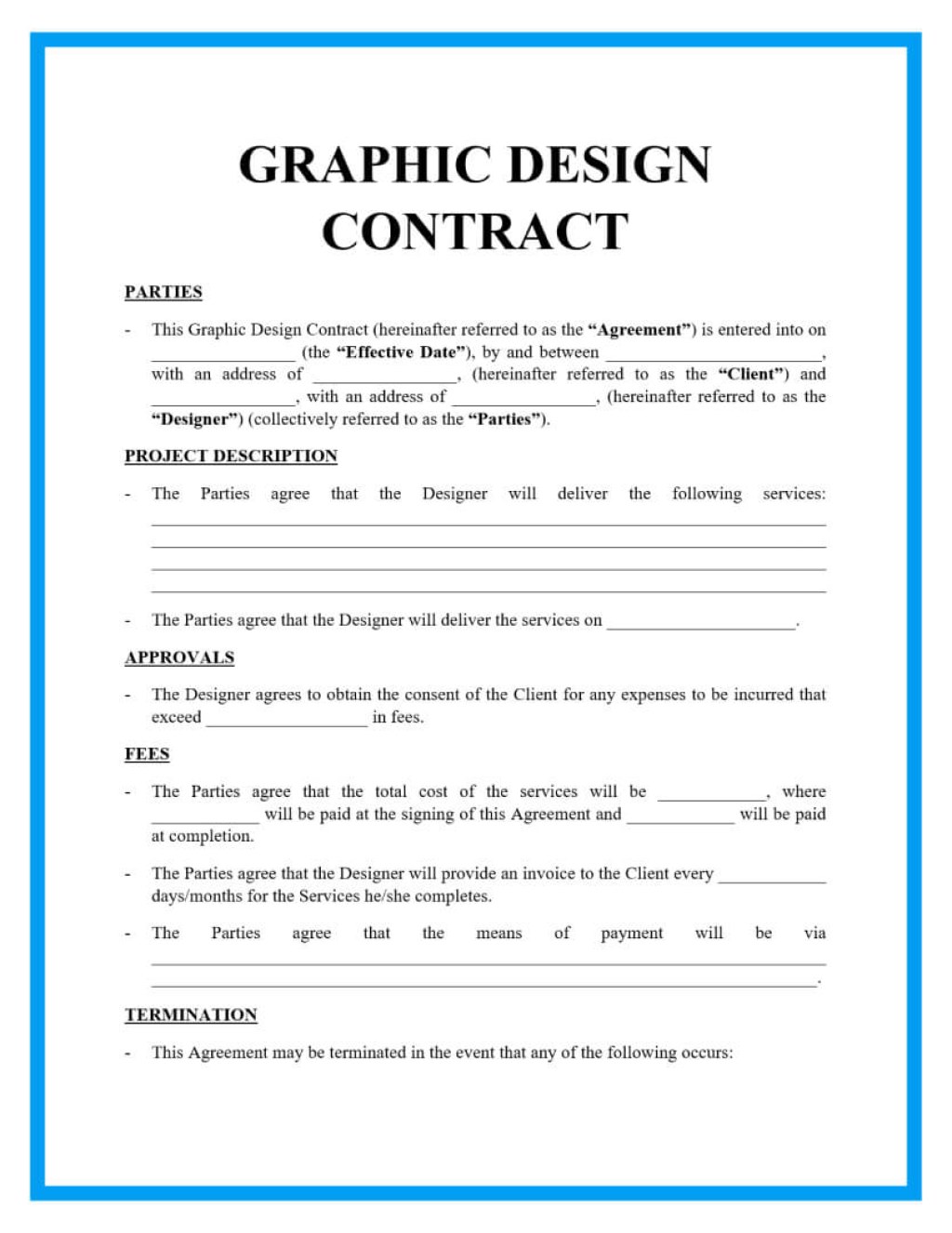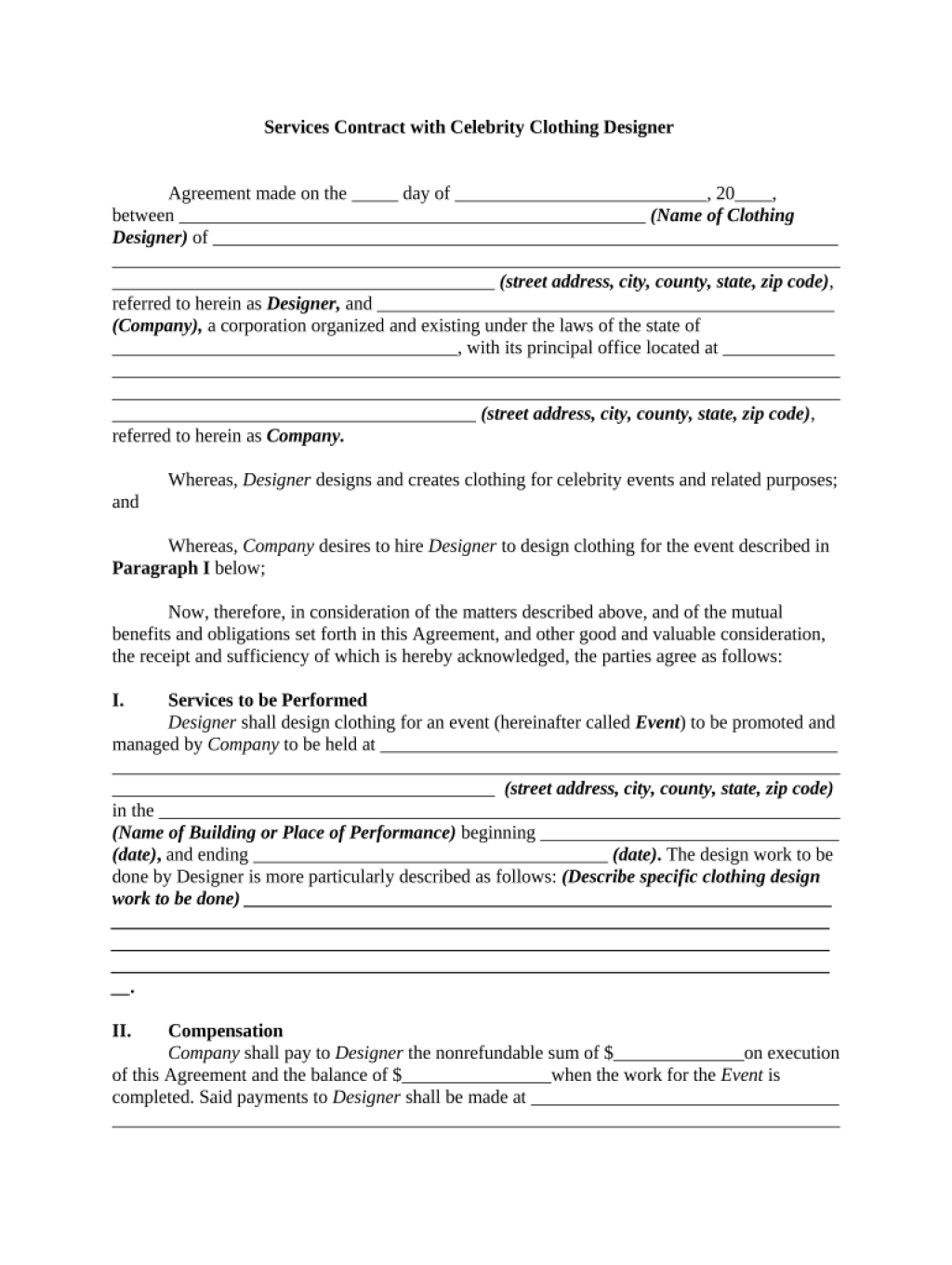Fashion Designer Contract Template: A Guide for Designers and Clients
Greetings, Fashion Enthusiasts! Are you a designer looking to establish a professional and legally binding agreement with your clients? Or perhaps you’re a client in need of a clear and comprehensive contract to protect both parties involved in the fashion design process? Look no further! In this article, we will discuss the fashion designer contract template, its importance, and how it can benefit both designers and clients in the industry.
Introduction
1. What is a Fashion Designer Contract Template?
2. Who should use a Fashion Designer Contract Template?

Image Source: signaturely.com
3. When should a Fashion Designer Contract Template be utilized?
4. Where can you find a Fashion Designer Contract Template?

Image Source: template.net
5. Why is a Fashion Designer Contract Template essential?
6. How can a Fashion Designer Contract Template be customized?

Image Source: pdffiller.com
7. How to create a Fashion Designer Contract from scratch?
What is a Fashion Designer Contract Template?
A Fashion Designer Contract Template is a pre-made legal document that establishes the terms and conditions between a fashion designer and their client. It outlines the rights, responsibilities, and expectations of both parties throughout the design process, including but not limited to payment terms, project timeline, intellectual property rights, and dispute resolution procedures.
Who should use a Fashion Designer Contract Template?
A Fashion Designer Contract Template should be used by both fashion designers and clients who wish to enter into a professional agreement. Designers, whether they are independent or working for a fashion house, can utilize this template to protect their creative work and ensure fair compensation. Clients, on the other hand, can rely on this contract to secure the services of a designer and establish clear guidelines for their project.
When should a Fashion Designer Contract Template be utilized?
A Fashion Designer Contract Template should be utilized at the beginning of any fashion design project. It is crucial to establish clear communication and expectations from the outset to avoid potential misunderstandings or disputes later on. Whether it’s a one-time collaboration or a long-term partnership, having a well-drafted contract in place is essential for both parties to operate smoothly.
Where can you find a Fashion Designer Contract Template?
There are various resources available online where you can find Fashion Designer Contract Templates. Websites such as [Website Name] offer customizable templates that cater to different design specialties and project types. It is important to choose a reliable source and ensure that the template aligns with your specific needs and local regulations.
Why is a Fashion Designer Contract Template essential?
A Fashion Designer Contract Template is essential for several reasons:
1. Legal Protection: It serves as a legal document that protects the rights and interests of both designers and clients, minimizing the risk of potential disputes or breaches.
2. Clarity and Transparency: It provides a clear framework for the design project, outlining the scope of work, payment terms, deadlines, and any additional requirements agreed upon by both parties.
3. Intellectual Property Rights: It addresses ownership and licensing of intellectual property, ensuring that designers receive proper credit and compensation for their creative work.
4. Payment and Pricing: It establishes the agreed-upon payment structure, including upfront deposits, milestone payments, or a flat fee, helping designers and clients manage financial expectations.
5. Dispute Resolution: It outlines the procedures for resolving conflicts or disagreements that may arise during the project, saving both parties time, money, and potential legal issues.
6. Professionalism: It showcases a designer’s professionalism and commitment to their craft, instilling confidence in clients and strengthening their working relationship.
How can a Fashion Designer Contract Template be customized?
A Fashion Designer Contract Template can be customized to suit the specific needs and preferences of both designers and clients. Some key elements that can be tailored include:
1. Scope of Work: Clearly define the services or designs to be provided, including sketches, technical drawings, fabric sourcing, or pattern-making.
2. Payment Terms: Outline the payment structure, including the currency, amount, and due dates. It is important to specify whether the payment will be made in installments or as a lump sum.
3. Project Timeline: Set realistic deadlines for each phase of the project and specify the consequences of any delays or extensions.
4. Intellectual Property Rights: Clearly state the ownership and usage rights of the designs, including any limitations or licensing agreements.
5. Confidentiality: Include clauses to maintain the confidentiality of any sensitive information shared during the project.
6. Termination Clause: Specify the conditions under which either party can terminate the contract, including notice periods and any penalties or obligations.
How to create a Fashion Designer Contract from scratch?
If you prefer to create a Fashion Designer Contract from scratch, here are some key steps to consider:
1. Research: Familiarize yourself with the legal requirements and regulations related to fashion design contracts in your jurisdiction.
2. Outline the Terms: Determine the essential terms and conditions you want to include in your contract, such as payment terms, intellectual property rights, and dispute resolution procedures.
3. Seek Legal Advice: Consult with a legal professional specializing in contract law or intellectual property to ensure your contract is legally sound.
4. Draft the Contract: Write the contract using clear and concise language, avoiding complex legal jargon that may confuse the parties involved.
5. Review and Revise: Carefully review the contract for any errors or ambiguities and make the necessary revisions before finalizing it.
6. Signature and Execution: Ensure that both parties sign the contract and retain copies for their records.
Pros and Cons of Fashion Designer Contract Template
1. Pros:
a. Legal Protection: Contracts provide a legal framework for designers and clients to navigate their professional relationship.
b. Clarity and Transparency: Contracts establish clear expectations, minimizing misunderstandings and disputes.
c. Fair Compensation: Contracts outline payment terms, protecting designers from non-payment or underpayment.
d. Intellectual Property Protection: Contracts address ownership and usage rights, ensuring designers receive proper credit and compensation for their creative work.
e. Professionalism: Contracts showcase a designer’s professionalism and commitment to their craft, enhancing their reputation in the industry.
2. Cons:
a. Time and Effort: Crafting and negotiating contracts can be time-consuming, requiring careful consideration of all terms and conditions.
b. Legal Costs: Seeking legal advice to create or review contracts may involve additional expenses.
c. Potential Resistance: Some clients or designers may hesitate to enter into formal contracts, preferring more informal agreements.
d. Limited Flexibility: Once a contract is signed, it may be challenging to make significant changes without mutual agreement and potential renegotiation.
e. Complexity: Contracts can be complex documents, requiring a thorough understanding of legal terminology and applicable laws.
Frequently Asked Questions (FAQ)
1. Can a fashion designer contract be modified?
Yes, a fashion designer contract can be modified, but it requires the mutual agreement of both parties involved. Any modifications should be documented in writing and signed by both parties.
2. What happens if a client breaches the contract?
If a client breaches the contract, the designer may pursue legal action to seek compensation for damages or other remedies as specified in the contract.
3. Can a fashion designer contract protect my designs from being copied?
A fashion designer contract can include clauses that address intellectual property rights and specify the usage and protection of designs. However, it is advisable to register your designs with the appropriate intellectual property authorities for further legal protection.
4. Is it necessary to hire a lawyer for contract drafting?
While it is not mandatory to hire a lawyer for contract drafting, it is highly recommended. Legal professionals specializing in contract law can ensure that your contract is comprehensive, legally sound, and tailored to your specific needs.
5. What should I do if a dispute arises during the project?
If a dispute arises during the project, refer to the dispute resolution procedures outlined in the contract. This may involve negotiation, mediation, or arbitration to reach a resolution.
Conclusion
In conclusion, a Fashion Designer Contract Template is an essential tool for both designers and clients in the fashion industry. By establishing clear guidelines, protecting intellectual property, and addressing payment terms, this contract ensures a smooth and professional collaboration. Remember to prioritize legal protection, maintain transparency, and customize the contract to suit your specific needs. With a well-drafted contract in place, both designers and clients can embark on their fashion design journey with confidence and professionalism.
Final Remarks
Disclaimer: The information provided in this article is for general informational purposes only and should not be considered legal advice. It is always recommended to consult with a qualified legal professional regarding your specific circumstances and contractual needs.